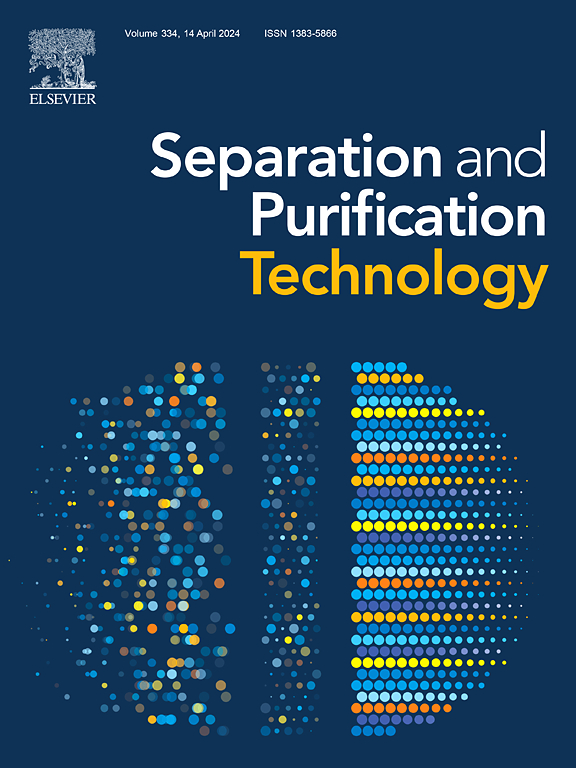A novel strategy for simultaneous removal of hardness, suspended solids and organics from fracturing wastewater: Efficiency, mechanism and application
IF 8.1
1区 工程技术
Q1 ENGINEERING, CHEMICAL
引用次数: 0
Abstract
The coexistence of high hardness, turbidity, and organic matter in oilfield fracturing wastewater presents significant challenges for its reuse and the efficiency of conventional treatment methods. The accumulation of hardness-causing ions, suspended solids (SS), and organic pollutants complicates treatment processes, reducing both efficiency and sustainability in wastewater management. A practical solution is essential to enable large-scale reuse of oilfield wastewater while minimizing environmental impacts. This study introduced an innovative nucleation crystallization pelleting (NCP) process for the simultaneous removal of hardness, organic matter, and SS from wastewater. The method employed pre-added seeds with active sites, facilitating the deposition of Ca2+ and Mg2+ as CaCO3, Mg(OH)2, and Mg0.03Ca0.97CO3 via Na2CO3 and NaOH addition. Organic matter was removed by co-precipitation and surface complexation, while SS adhered to the particle surface due to hydrodynamic action. Under optimal conditions (4200 mg/L Na2CO3, 1400 mg/L NaOH, 7.5 % seed filling rate, and 80 m/h up-flow velocity), the three-stage NCP system achieved removal efficiencies of 95.6 % for total hardness, 90.1 % for TSS, and a 31.1 % reduction in COD, with effluent hardness consistently remaining below 300 mg/L. These results satisfied the requirement that the total concentration of Ca2+ and Mg2+ ions in the field-prepared fracturing fluid remains below 150 mg/L. The process demonstrated stability across three reuse cycles, confirming the seeds’ reliability, efficiency, and reproducibility. A pilot-scale NCP system with a treatment capacity of 50 m3/h was developed, and 120 h of continuous operation demonstrated stable effluent quality. Dense pellets (∼1.2 mm) formed during the treatment required no additional processing. The findings confirmed that the NCP system effectively and reliably treats oilfield fracturing wastewater, achieving substantial removal of hardness, SS, and organic pollutants. The formation of dense pellets without generating sludge underscored its practicality for large-scale applications. This study offers a scalable and sustainable solution to wastewater treatment challenges, paving the way for broader adoption of NCP technology in industrial settings.


求助全文
约1分钟内获得全文
求助全文
来源期刊

Separation and Purification Technology
工程技术-工程:化工
CiteScore
14.00
自引率
12.80%
发文量
2347
审稿时长
43 days
期刊介绍:
Separation and Purification Technology is a premier journal committed to sharing innovative methods for separation and purification in chemical and environmental engineering, encompassing both homogeneous solutions and heterogeneous mixtures. Our scope includes the separation and/or purification of liquids, vapors, and gases, as well as carbon capture and separation techniques. However, it's important to note that methods solely intended for analytical purposes are not within the scope of the journal. Additionally, disciplines such as soil science, polymer science, and metallurgy fall outside the purview of Separation and Purification Technology. Join us in advancing the field of separation and purification methods for sustainable solutions in chemical and environmental engineering.
 求助内容:
求助内容: 应助结果提醒方式:
应助结果提醒方式:


